Why Asset Tracking Software Is Good for Restaurant Business
You've got a big appliance that's vital to your food service or restaurant company, several of them possibly. No matter what type of appliance it is – range, fridge, fridge, heater – it can take a lot of time and effort to set up a system that lets you learn from that appliance and make business decisions based on the data it produces. This is the promise of the Internet of Things (IoT) to learn from system data, manage properties, and run your business on the basis of real knowledge and knowledge, not guesswork, and past history. From handling customers to delivering great food, atmosphere and service throughout, it's a pain in the ass to operate a restaurant or even a small cafe. It is not easy to pay attention to specifics in order to ensure good quality, sales and benefit.
Although restaurant owners are attracted by architectural designers to create a perfect atmosphere and a relaxing setting, they usually neglect the most important aspect of operating this business; the management of restaurants. Although investment in a great atmosphere, climate and food quality will certainly go a long way towards the growth of the restaurant, investment in technology also plays an equally important role in this. It doesn't matter whether you operate a chain of restaurants or a tiny café, getting an automated restaurant management system goes a long way to helping you meet your short-term and long-term goals.
Reasons Why a Restaurant Management Software Is Important and Beneficial
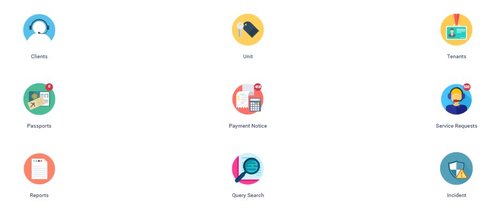
A. Attendance Management: Tracking employee performance and attendance is a painstakingly challenging job if you have to do it manually. Luckily, with the RMS, you have the additional advantage of controlling time and participation for your waiters, managers, chefs, cooks and restaurant staff. The age-old practices of using Excel spreadsheets, written contracts, and sheets of paper weeds away with the passing of time.
Restaurant and cafe owners have become smarter than they were before, and now, with a little investment, they can do everything they need to maintain operational efficiency and efficiency. Restaurant owners realise that having a well-managed system in place eliminates their time, costs and effort to handle workforce. Here are some of the features of traditional restaurant management applications with staff management capabilities:
Update availability of employees
Employee attendance period
Employee leave and incomplete documentation
Scheduling of staff
B. Inventory Control: Your restaurant or cafe's success will depend on how successfully you purchase, store, manage and efficiently use your inventory by analysing customer demand and supplier supply.
Inventory is also one of the greatest direct costs of a restaurant, and one that needs to be continually kept on tabs. Know your inventory in real time, such as how much has been bought, used, wasted, in storage, in kitchens, etc. The advantage is to save food from being wasted, and to streamline your inventory management process in order to better understand and satisfy consumer needs.
C. Sales Tracking: Sales is a challenge to track and maintain. From cash and credit card customers to expenses, taxes and profits, you need a restaurant management software that does everything for you. With a restaurant management software, you have the added benefit of a tablet ordering system and a POS management system. All is going to be simplified. When the waiters take orders, they do it on the tablet, which is integrated in real-time with the backend to track costs, revenues and sales. You can generate weekly or monthly reports to know the sales revenue from each item on the menu, cash or card sales, and much more.
D. Credit and Debit Card Processing: It is therefore important to cater to all types of customer that will impact the bottom line, i.e. sales revenue. Whether they want to pay cash or card, your restaurant management software should be able to take care of credit/debit card and cash sales.
E. Preparation of Financial Statements: You should be able to produce weekly and monthly financial statements that track the expenditures, sales, taxes, wages, inventory and much more. Restaurant management software simplifies the preparation of financial statements, such as profit and loss statements, tax statements, and so on. With this feature, all the required data can be accessed instantly through the system, saving a lot of time and effort as planned.
F. Cloud access: With a restaurant management, you get cloud access to the system where everything is done and saved in the cloud. You don't have to worry about the confidentiality, accessibility, and protection of your data.
Asset tracking in Restaurant Business
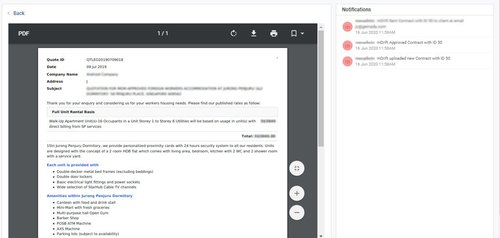
A restaurant is a spot with a range of tasty snacks and drinks. Yet it needs assistance to handle its inventory and inventories in the best way possible. Restaurant or café contains a wide variety of inventories, raw materials needed for the preparation of dishes, and a number of useful products and equipment. When you've got a lot of items (assets, inventories) to take care of in order to preserve them, save them from being stolen and missing. Asset monitoring software is very useful. An asset can be any object or system that directly or indirectly helps to produce revenue that can be considered to be an asset. Following are the importance of asset tracking in restaurant business.
1) Reports and Analysis: When handling the restaurant, asset monitoring management software is used. You get reliable reports, statistics & analytics. It helps handle the day-to-day activities of the restaurant. Reports on the raw material used and how much revenue is generated? How much money is spent in the whole process, from collecting raw materials to getting food ready to eat? Asset tracking software not only offers tremendous data-gathering assistance, but you can also use the information to make a critical decision to develop your business. For example, what should be the price of the product? Is this product approved by the customer? What are the most popular dishes among the clients? The programme increases overall performance.
2) Asset Tracking: Tracking assets for your restaurant is not a simple task, particularly if your restaurant has multiple branches in different areas. Resources come in all sizes, tiny, big, and very big. As a consequence, asset management software helps you to monitor all of your assets in real time. For example, if you have delivery vehicles, you can keep track of them all. You know if they're in a stop spot, too, or if someone's using it? What is the actual state of the vehicle? The monitoring programme provides you with precise and reliable details. It is one of the best choices for monitoring the depreciation and valuation of each asset. Technology still plays an essential role in maintenance activities. It keeps them in a good position and effective, therefore. It also helps to boost the efficiency of the asset.
3) Inventory Tracking: Stock is a consumable commodity or commodity owned by a company or restaurant. Similarly, inventory monitoring refers to the identification of non-unique items or inventories of value for a restaurant. Inventory is usually counted as stock or consumable products, such as parts or materials. Inventory monitoring software helps to let you know how many products are left in stock. It keeps track of inventory use on a regular, weekly and monthly basis. One of the key aims of inventory control is to conserve and use items until they expire.
4) Quick Customer Service: The software removes the unnecessary process making the process quick and more convenient for the customer. By keeping up real-time records of assets, most restaurants can likewise guarantee better regulatory compliance. It prompts improved brand picture and client repetition.
5) Utility Management: It will assist your restaurant in handling, tracking, assessing and reporting on utility use. It is also helpful in generating energy bills on an annual, monthly or day-to-day basis. The greatest advantage of the app is that you can set up consumption warnings. So, when the consumption is about to stop, you'll get warning & notification. Some of the systematic operations that are carried out with utility control are the HVAC system, electrical operations, refrigeration plant, water use, etc.
6) Cloud Based Management: This is one of the best features for the management and company of restaurants. Safety is used in cloud-based management as part of the cloud service. Dedicated servers and database systems remove vulnerabilities by providing protection for your data from a trained and dedicated security team. The data is stored in encrypted form. Cloud-based asset management streamlines the process of managing your restaurant assets via a centralised database. It is hosted in the cloud and can be accessed from your mobile phone, tablet or PC. It's anything but difficult to use. You will then handle your money far from the restaurant even while you're on a business trip or holiday.
Inventory & Asset Tracking Practices for a restaurant business
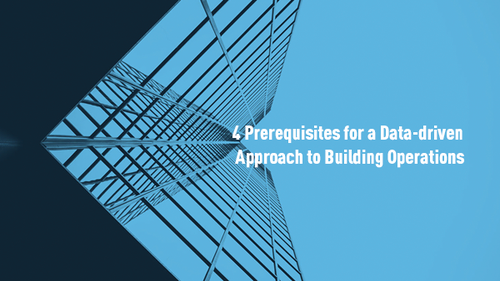
Successfully & quickly taking care of the orders, menu and a good facility makes any restaurant business to stay in the market. Another important part is managing & monitoring inventory & assets. Other than this, there are strategies you need to take care of, for growing your restaurant business. In short, there are a lot of things which need your attention. Here suggesting the best dos and don’ts practice list for your restaurant. Moreover, asset tracking software plays a very important role in a few other restaurant business practises described below.

1.Optimize business with asset tracking software.
Not only does the programme strengthen the security of the enterprise, it also helps to increase business performance. The programme helps to enhance overall efficiency and you can also note better daily operations. Most restaurant owners would accept that storing and maintaining inventory can be a hectic job. However, all activities can be performed quickly, reliably and effectively with asset tracking software.
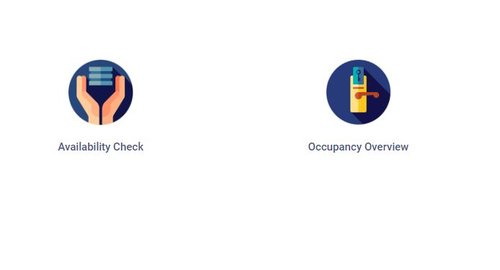
2. Reports & Analytics.
If restaurant management uses asset monitoring and management tools, you get reliable data, statistics & analytics. It allows restaurant management to enhance day-to-day operations, such as the programme will provide details of raw material use and how much revenue it produces! And other questions like, "What are the other expenses of the whole operation, from collecting raw materials to having food ready to eat? Asset tracking software not only offers tremendous data-gathering assistance, but you can also use the information to make a critical decision to develop your business.
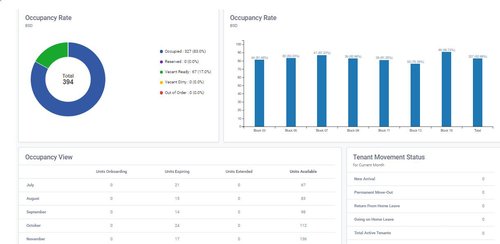
3. Avoid Pen and Paper Method.
When there were no inventions, the pen & paper approach was used at that time. This was the first conventional and most simple approach to be used for monitoring. However, some companies, including restaurants, do use it. A large or medium-sized restaurant has a multitude of properties. With so many assets, it's hard to keep track of each and every asset through a pen-paper approach. The data you obtain with this method will not only be incorrect, but will also lead to a wrong business decision. Not only that, workers spend more time looking for information on properties, resulting in reduced efficiency and manpower wastage.
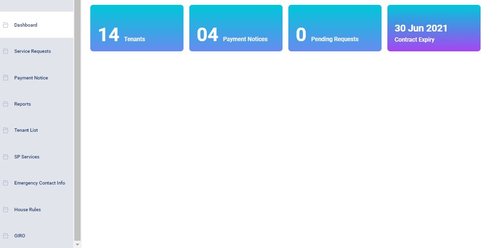
4. FIFO Technique for Inventory.
In order to prevent spoilage, the expiration of the commodity, the expired commodity; the first product to be used. The theory of the technique is clear, whatever product batch comes first, that particular product batch comes first. Placed the old stock on the shelf and the new stock on the back. So, if the employee comes to collect the stock, he or she will automatically pick up the old stuff first.

5. Stock Monitoring & Management.
Stock is known to be one of the most precious and valuable items in the restaurant industry. The company depends on it, after all. It is therefore a great responsibility to maintain and keep track of the stock. This is where the asset monitoring programme comes in. You are always updated on the stock level (low , moderate or high) via the app. When the stock is limited, the device will alert you any time the count exceeds the minimum amount you determine. It shall also inform the individual responsible for managing the stock of that particular item. You may also identify the reorder level of inventories for each item separately.
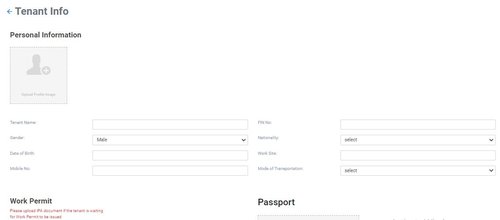
6. Software Training to Employees.
Training workers is one of the most critical factors in industry, but most of the company lacks this aspect. At least managers and chefs should be qualified so they can work closely with stocks and inventories. It would also be easy for them to recognise problems. Through preparation, they can learn the pattern, the inventory cycle and how things work together. You can also inform them about how incorrect information is affecting the company, particularly the stock and inventory! There can be great consequences for a wrong decision! Also, remind them how important this work is, and it should not be taken lightly!
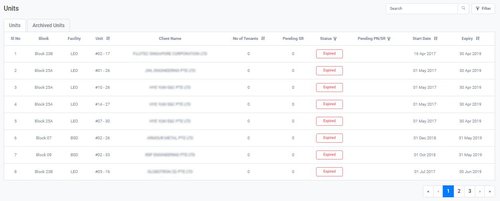
7. Shelf life Management.
Shelf-life management is an important aspect of restaurant inventory management, since each item in the inventory has its own shelf life. And no one has the right to mess with someone's health or related issues. For each object in the inventory, you need to ensure and decide how long it can be kept and used before it gets spoiled. So, if, for a reason, the sales rate is slow or there is another reason why the products were not used during their shelf-life, you will be informed, along with the reason for the incident.
Conclusion
The current climate is competitive in terms of the restaurant market. It's really hard to make your own room stand out. But it's still possible to make improvements to expand the bottom line. To this end, you should use creative and constructive strategies and introduce innovative practises. You will reduce your operating expenses and raise sales without affecting your day-to-day operations.
Restaurants and hotels that maintain and track their properties properly have a greater chance of stability, productivity and sales development. Undoubtedly, inventory-monitoring software provides a significant relief in terms of handling their properties precisely.
Let's start with the simple way to create a website.

Interested in Domitos? Get the Features Guide Today!
Domitos, is world's most sought after facility Management System and we look forward to work with. Digitize your facilities today!